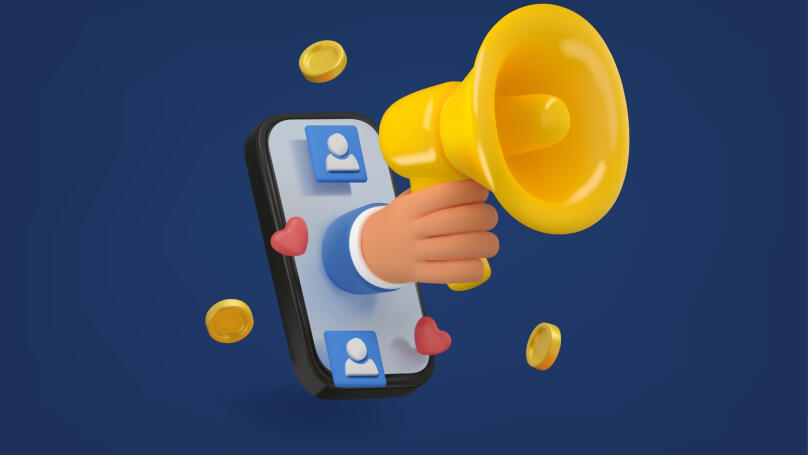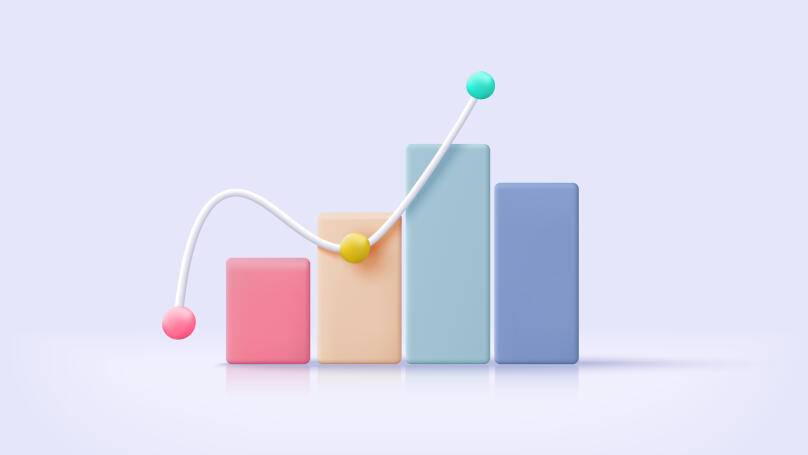Brand identity

What is a Brand Identity?
Brand identity combines visible brand elements such as corporate colors, product packaging design, logos, and corporate fonts. Brand identity will help small businesses stand out from the competition and establish their positioning in the market.
Identity is not about brand image, PR, or marketing activities that promote a company in the market. Instead, it is about design, the visual perception of a brand, and the association of specific colors or pictures. A strong brand identity promotes a company because it starts to be associated with this or that shade, character, or even sound. Moreover, such an identity comes at a price: Nike, for example, with its checkmark logo, boasts a brand value of over $39 billion, and that's only number thirteen on the list of global companies!
The most expensive brand is predictably owned by Apple: over $241 billion for a bitten apple. Yes, this amount does not characterize the value of the apple itself. Still, the company's logo and corporate identity, judging by surveys conducted among US experts, significantly impact the brand's final value.
The definition of Brand identity is all about ensuring that a company's overall design identity will lead to instant recognition among potential customers. That's why so much attention gets paid to visual brand identity. The designers who create the guideline for visual positioning, color palette, and mock-up versions of presentations receive loads of money.
The Importance of Brand Identity

Why brand identity is essential:
- The company is different from its competitors. Indeed, this is immediately obvious: it has different colors for its advertising campaigns and website, different creatives, and a different social media style. Nevertheless, visually, the brand stands apart from the competition. It is what makes it memorable to potential customers. The brand's logo design is unique because it is not copied from a methodology book but gets created with special care. There is a specific meaning behind every shade. The customer notices it and wants to get immersed in it. The kit of branded fonts, colors, and shapes used by the designer to form new visual communications provides the brand with the individuality that every company in the market strives to achieve.
- The company is consistent in its communications. That is also what makes it attractive to consumers. Three looks at different ad creatives designed in a single color system, and you will remember this brand. Why is Coca-Cola red? And orange for Fanta? Why not green or yellow? Are these drinks memorable because of their primary colors? Yes, they are, and they come to mind first after the suggestion to drink something like a colored soda. A consistent style must be used in all company advertising "packages," in all visual marketing communications, and even in internal communications with employees. So establishing corporate identity and identity is one of the first tasks of the design department of the new organization.
- A company automatically builds customer loyalty. A consistent identity builds trust between the brand and potential clients. The company and its products are easily associated, increasing brand awareness. Loyal customers are practically brand advocates - satisfied consumers who prepare to recommend a company's products and services to their friends, and such word of mouth works better than any marketing. Developing identity is equivalent to investing in advertising.
Brand Identity vs. Brand Image
How is brand identity different from brand image? An image is the overall character of a brand, not just its visual perception by the audience. For example, a company is "calm and reliable" or "bright and cheerful," like its products. And a company's identity is responsible for "they always use blue" or "if the advertising is in purple, this is about them." A company's image is almost impossible to control, whereas the identity is in the hands of marketers, designers, and other specialists working with the brand. It is sometimes said that identity is part of a company's image, but the authors of leading textbooks on building a brand's visual identity (often used as a guide to identity) disagree.
The Elements of a Brand Identity

What components of brand identity do modern marketers and designers identify?
- The Logo and Wordmark
The logo and wordmark are fundamental elements of a corporate identity by which an organization gets recognized. A logo is a graphic symbol, while a word mark, i.e., a specific word or phrase, is the company's name. Most modern companies have switched to creating cleanly written word marks - they do not use the shading or swirls popular in the second half of the 20th century. The company may have several logos, and some agencies that develop identity insist on this. However, there is usually only one verbal sign, but the agency can place it on different backgrounds, coloring it in the brand's signature shades.
- The Font
The brand's font often gets written in the wordmark. There may be several fonts; theorists even recommend that. All these fonts (primary and supplementary) should be used in the company's print products, on its website, in visualizations for internal communications, email marketing, presentations, and in every advertising creative.
- Style and Consistency
The visuals must be consistent in style. The style should be consistent. Lots of images? Then it must be like this everywhere. Strict minimalism? Every visual product will need to be styled in it, regardless of its purpose. So you should conduct voluminous research before choosing a style for your communications: Changing the style "on the fly" will be much more complex and expensive.
Style, among other things, includes brand colors. There can be two to three basic shades, three to four auxiliary shades, and one to two accent colors. The central insight that should guide you when choosing colors is what emotions consumers evoke and what consumers think about a company that uses them. There are no uniform brand identity templates in terms of colors - in one case, yellow might be perceived as something happy and warm, in another as a harbinger of danger, informing them that they'd better get out of here quickly.
That also includes the shape of the logo: users react differently to pointed and sharp shapes and soft and round ones, which also need to be taken into account to build a brand identity.
- The Strapline
Remember Nike's slogan, "Just do it?" Just three words - the company is remembered as a stoic brand, helping and softly supporting in every situation. So a good identity strategy should spell out slogans. Preferably with visuals, i.e., written in a brand font and shades, using patterns and other graphic elements of the identity you have already chosen.
How to Create a Brand Identity

Creating a brand identity is a complex process that people without visualization experience cannot do. Or is it? You can do it yourself if you can't hire an agency and hand it over yet. And here's how:
- Analyze the company and the market. Do a SWOT analysis. See what identities exist in the market. Identify who uses them and why. Then, please find out how they've changed over the years and how consumers have reacted.
- Analyze your customers. Who are you trying to reach with your products? What products do you have coming out soon? Is there anyone you won't sell your products to? Why not? What is the profile of the potential customer?
- Define the business objectives of the project. Brand identity will contribute to achieving them. For example, if you claim to "capture" an entire market segment, the identity must match that segment's perceptions of your focus products.
- Define the message you want to convey through the brand identity. For example, your logo might say that you are a bright and trendy company that is always on the cutting edge of trends. Moreover, a strapline could say you're helping the consumer be as bright and chic as you are. To establish a brand identity, you need to know these messages by heart. It is what the consumer will read, what they will notice first. So write down who you are, what your value is, what character your brand would have if it were a person, how it would communicate, and how the voice sounds. This set of actions will help define what makes you different from other companies and shape the message behind the identity.
- Choose the elements that best reflect your message. Next, you must choose fonts, colors, shades, patterns, and overall style. You can start by using standard color classifications:
- Red - passion, and excitement.
- Orange - friendliness.
- Yellow - fun and happiness.
- Green - nature, and money.
- Blue - trust.
- Purple - royal luxury.
- Pink - femininity.
- Brown - ruggedness and masculinity.
- Black - modernity.
- The logo's round shapes get perceived as warm and cozy, friendly, loving, and feminine. Straight edges like squares or rectangles refer to strength, efficiency, stability, and reliability. A horizontal straight line represents tranquillity and softness, and a vertical line represents masculinity and strength.
- Test the elements on the control groups. For example, does your logo convey the message you want? If not, why not? What could you remove, and what could you add? Ask your respondents about this before launching the identity 'into production.' Any agency that creates a corporate identity has a service for testing hypotheses about the company's identity.
Examples of Brand Identity
- Apple
Apple's corporate identity is bright, contemporary, and different from all its competitors. They are ambitious and creative, they are unique, they are at the height of fashion year after year, and yet they are incredibly technological. Their brand identity is transformed depending on the product they want to sell: the company is highly creative, it becomes a behemoth that can withstand any demand, then it becomes like a smart home that helps you find your keys, your dog, and half your bag. Apple is a consistent brand; its identity doesn't change dramatically from season to season, making it memorable to half the planet and sure to become recognizable to all its customers.
- Nike
Nike sells their products not through a complex brand identity but through the personalities involved in advertising the brand and being brand ambassadors. The brand identity is quite striking: the logo, the brand slogans, and the contrasting colors in the design. Their advertising creatives conjure up a wave of love and interest in potential clients, a sense of empowerment to infinity, and confidence in their abilities. Another element of style is the presentation of photographs of real people using Nike products in their everyday lives.
- Starbucks
Starbucks has made its communications revolve around the Instagram breakfast or the image of a busy person with coffee. The brand visuals are striking and recognizable, and although the primary hues were chosen, only half relate to our fantasy of coffee. The siren logo is also unmistakable, but it refers to coffee and related products indirectly, if not altogether. However, it has remained on Starbucks cups for as long as the brand has existed, making the company recognizable worldwide and often turning a coffee shopping trip into a photo shoot.
- Coca-Cola
Coca-Cola is one of the brand identity leaders in carbonated drinks. You know its advertising campaigns very well: Santa, a polar bear, a truck carrying drinks, red and white cans with water drops, and so on. The designers wanted even the chosen font to spell out the brand name to relate to consumers' enjoyment of the drink. The company didn't stop there: they created uniquely designed glass bottles, making them even more memorable for consumers.
- Tesla
Tesla stands for breakthrough technology, innovation, and minimalism. The brand logo refers to self-confidence, quick decision making, and luxury. The matte finish, associated with the company's products, also represents futuristic and expensive. The primary hues of the brand are red, grey, and silver. They refer to performance, speed, and technology. In conjunction with advertising creatives, Tesla's corporate identity gets associated with a paradigm shift, with the rise of individualism, the simplicity of life and its ease, and innovation.
- McDonald's
For the everyday consumer, McDonald's is a close friend, kind and exciting, not emptying the wallet into two accounts, someone who will always help and support, who will answer at any moment of the day or night. To achieve this, the company has changed its visual identity, changing the design of many communications and restaurants. Marketers and designers tasked with developing a brand identity turned to the McDonald's advertising company in the 70s of the last century. Then, the campaign slogan was: "You deserve today's break." Now all the visitors of the chain's restaurants and their regular customers feel this lightness and tranquillity. Furthermore, it's not just that: the company's designers have changed everything, from the logo to the font and advertising style.
- Netflix
The company captures the user's attention by resembling a black cinema screen with its logo. Stylish and simple logo, clear identity, transparency in communications with users - Netflix does a great job of keeping one line even in the corporate development of brand identity in the HR market. The platform now has a slightly variable design, which is consistent, adapts to the user's needs, and does not look like a patchwork quilt. The logo's color doesn't change, nor does its font.
- Spotify
Spotify has changed its visual identity more than once. The brand is adaptive but needs to be more consistent in its style of presenting the company to new users. Its green logo now refers to youthfulness, speed, friendliness, and the center of attention. Many perceive contrast as sharp and a sign of quality, as a confidence to win. It was told by the company's designers, who have been experimenting with new visual options for a long time.
- Adidas
Initially, Adidas stripes appeared on their sneakers to make them more durable. The idea turned out to be a great publicity stunt, and since the 1930s, the stripes have been firmly embedded in the brand's identity. The company has several logos: the trefoil symbolizes striving for diversity and the three parts of the world, the mountain represents overcoming difficulties and reaching goals, and the globe is the Earth and adapting to change. The logos are written in lowercase letters to emphasize the everyday nature and accessibility of the brand. All visual communications are simple, minimalist, in the same colors (occasionally changed), and filled with powerful slogans.
- Amazon
Amazon tries to broadcast quality, values, and service through its logo. The main aspects to which its visuals should relate to the customer are saving money, customer centricity, and the satisfaction of a good and profitable purchase. Therefore, the company uses a recognizable color combination, slogans, and a "smile" that speaks of a high-quality customer experience and safe transactions.
Personal Brand Identity
What is a personal brand identity? It's the visual component of your brand. In other words, it is the primary colors you use in your posts and posts, the colors you wear most often, and the accents you place in your images. Creating a personal brand identity will require you to understand the complimentary shades you use, the colors and shapes (circle, square, and so on) you associate with, and the font that resonates most with you. Personal identity is similar to the company's identity, but you promote yourself, not the business. Therefore, it would be best if you translated in your visual identity your goals, core values, and the reasons you need to believe. You can do this through slogans, promises, and slogans explaining expertise, and they can be written even in the header of your profile.























